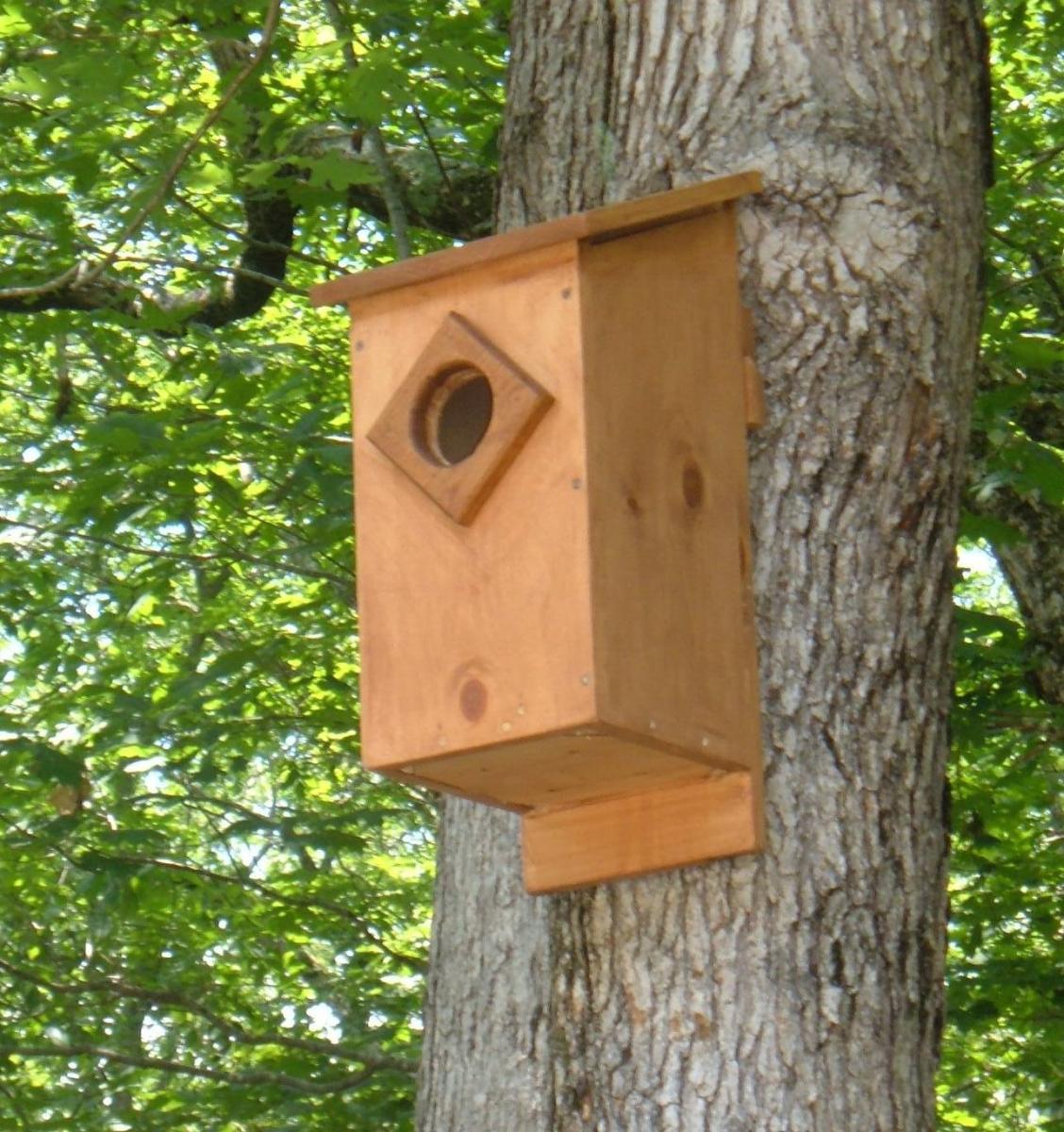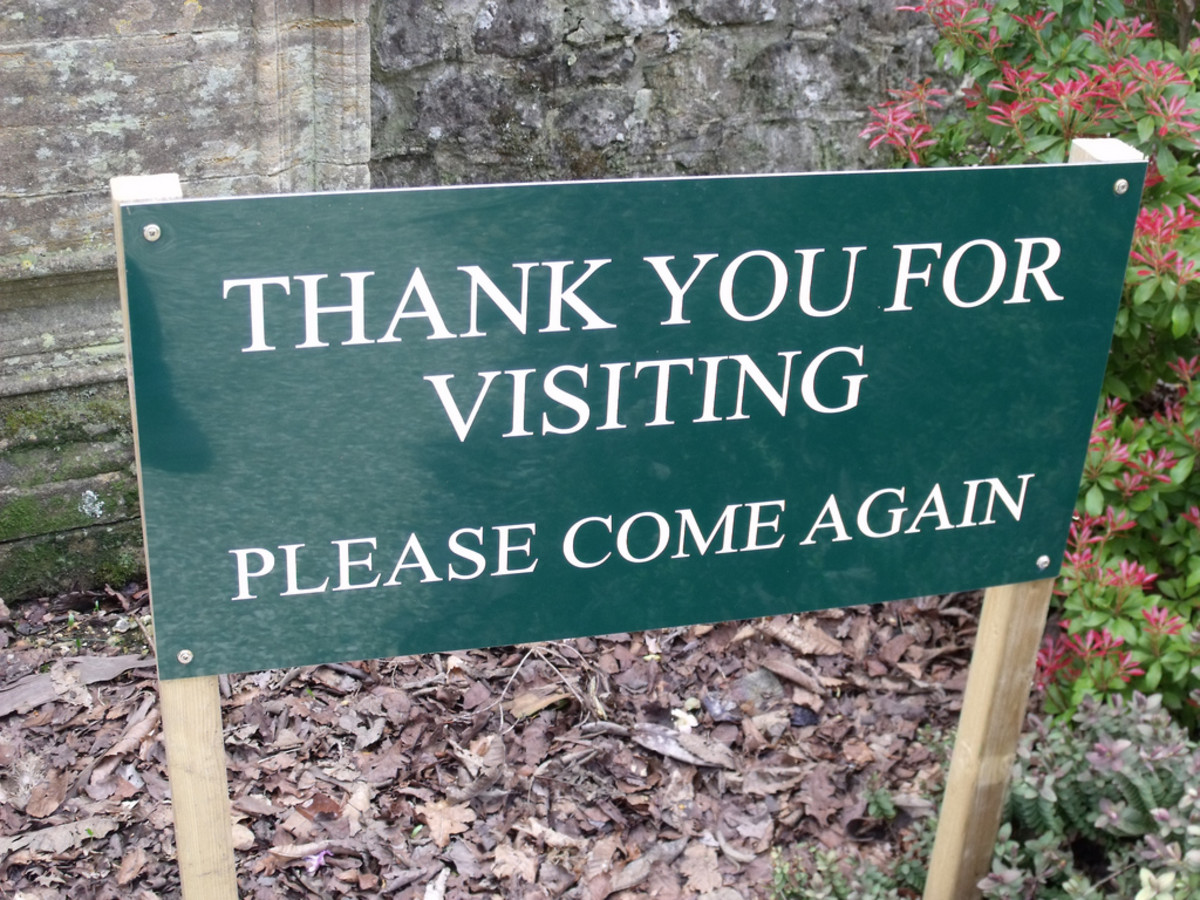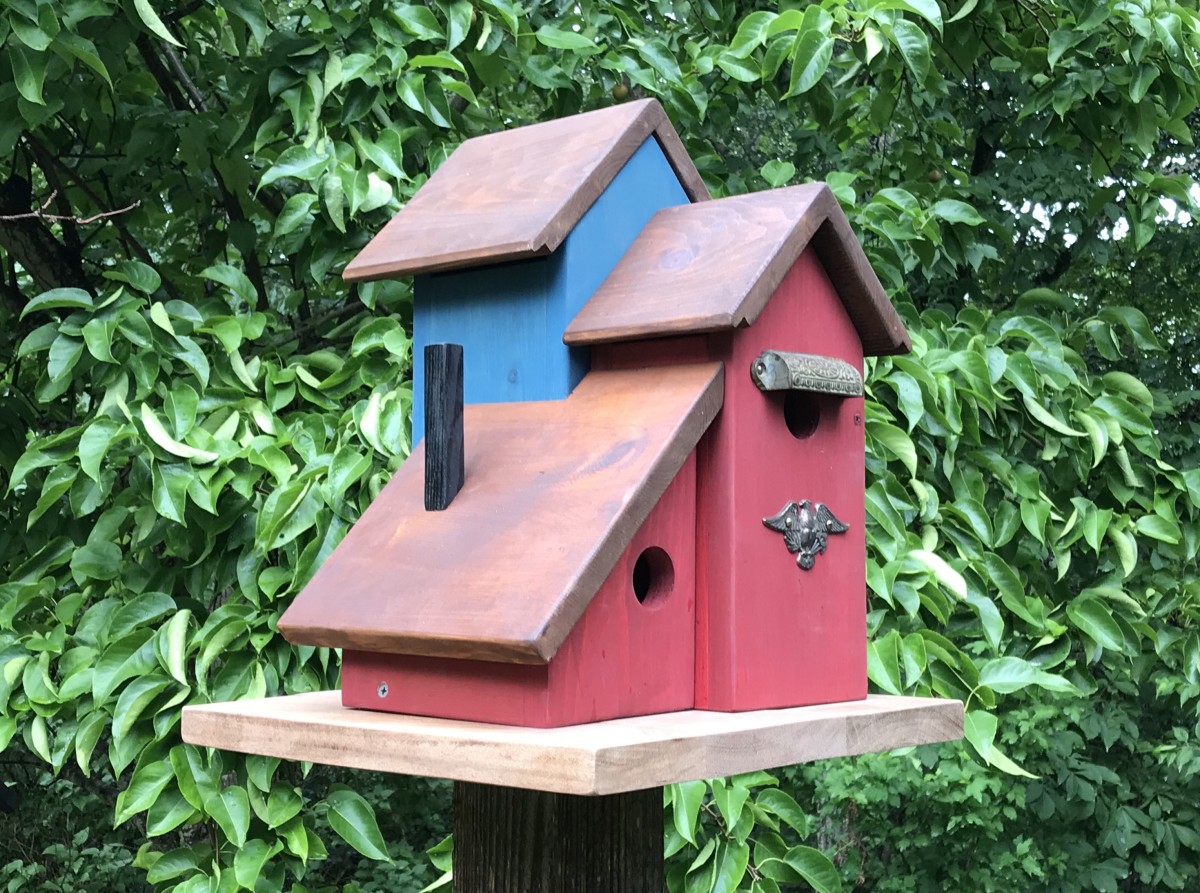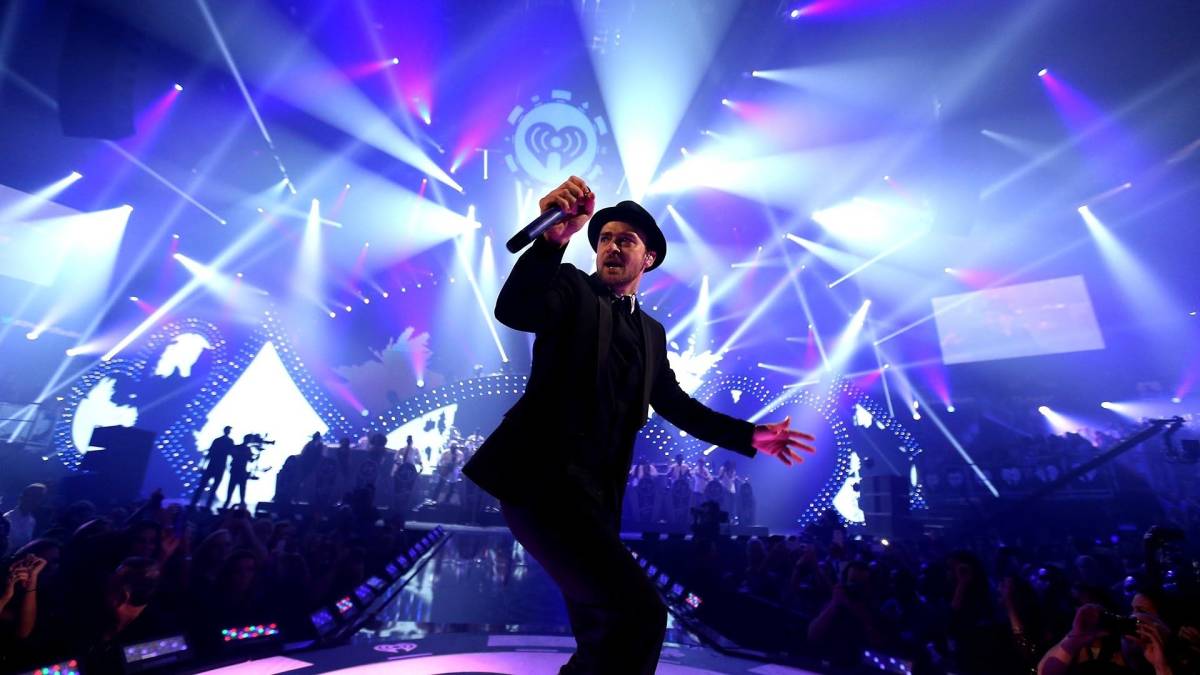How to Write a Piece for Piano
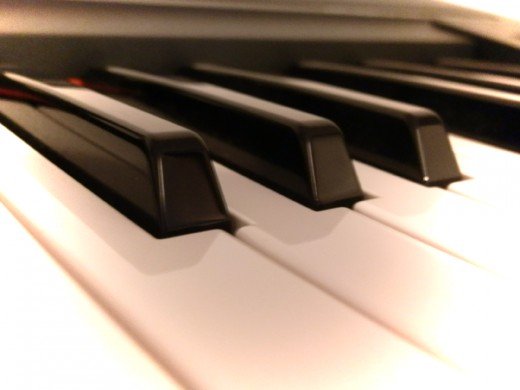
If you play the piano and would like to write your own music, then here's one method that will help you get closer to your goal.
It's easier to make up a piece of piano music if you try to base your piece on a small fragment of a melody or idea. Grandiose themes and statements will come later when you've had lots of experience, but to start things off you might want to keep it simple.
You'll notice that this piece relies on a very straightforward little tune, which is expanded and developed using a number of composing basics, including:
- Repetition
- Sequences
- Echoes
- Variation
If you can create interest in your music while sticking to just one main idea, the result you end up with should be highly satisfactory. You can see, hear and print the score for this particular piece by browsing to its page on Score Exchange following this link.
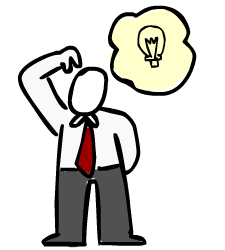
Basic Composition Techniques
Repetition
| Sequence
| Variation
|
|---|---|---|
Repeat a melody or rhythm
| Repeat a melody or fragment of a melody at a higher or lower pitch
| Vary the ending of a melody
|
Repeat part of a melody or rhythm
| Vary the middle of a melody
| |
Echo a melody or rhythm between the two hands
| Vary the rhythm or length of a melody
|
Getting your Piano Piece Going
So where do you start? Well, first of all, you need an idea. This can be a tune that's going through your head, or a bit of a tune you've heard somewhere. Whatever you start with will be the basis for everything that follows.
My piece is from a set of tunes for children I'm hoping to develop as a suite. This was the first piece I wrote and I decided to keep it as simple as I possibly could. The challenge then becomes how to make it interesting to play and to listen to while still maintaining its air of gentle innocence.
I started off with a 4-bar tune which I came up with after about half an hour at the keyboard. You'll notice a couple of things when you examine the first four bars:
- The melody revolves around the note G (see graphic below)
- The left hand is kept basic and as minimal as possible
- The left hand provides the harmony, filling in the missing notes from the chords and complementing the right hand melody
Naturally it takes time to get this first section just the way you want it. The section ends on the dominant (a D chord) because that makes it sound incomplete (see graphic below). That way it makes perfect sense to repeat the first section again, but with a different ending (on the tonic or G) to wrap it up nicely.
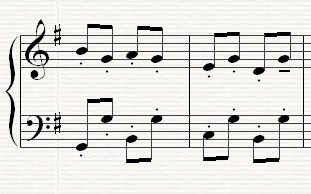
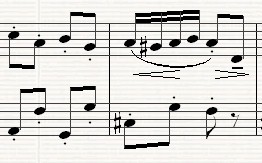
Building your Piano Piece
If you take a look at the next bit of the song, bars 5 to 8, you'll see that it's basically a repeat of the first four bars, but with a new ending. This time the section finishes on a G, with a more conclusive rhythm that comes to a definite stop.
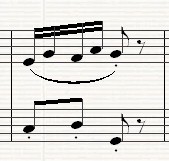
But what happens after that is also interesting.
Rather than rush ahead with new material I decided to repeat what is essentially the second and third notes of the original right hand melody. I built in variety by getting the left hand to echo the right, and then by moving the melodic fragment around the keyboard, first higher in the right hand, then lower in the left, as in the picture below:
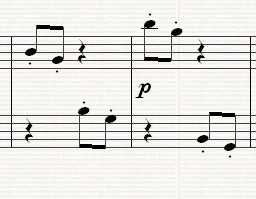
The Piece Changes Key
Next, a quick change takes us to the relative minor of G major, which is E minor. This section begins with a sequence of the opening melody six notes higher. But rather than just repeat the opening section note for note, I let everything fall a tone at a time. This is the kind of variation that's vital to keep listeners paying attention.
The middle section concludes with both hands playing the sixteenth note pattern before landing on the note E to signal the end of that section.
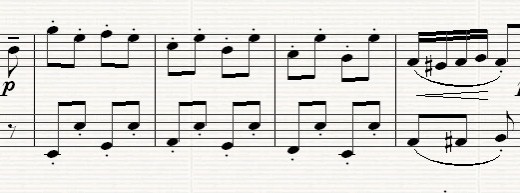
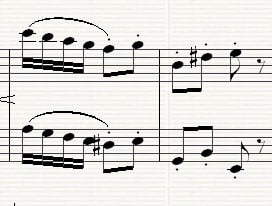
Back to Melody One
The middle section ends with that echoing two-note phrase, just as the first section did. This time it's in the key of E minor, though, after which it modulates (changes key) back to G through D for the final part of the piece:
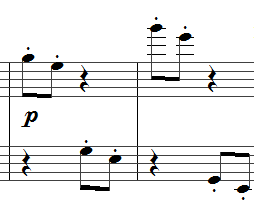
And that brings us to the final section of the piece, which is a straight repeat of the first. The only difference is the ending, which repeats the final sixteenth note phrase an octave higher each time, signalling something different for the ears and also a potential end to the entire piece.
Summary
So there you have it. Why not try writing your own piece for the piano? Here's a summary of the steps you need to take:
- Start with a simple idea
- Use that idea in as many ways as possible
- Use repetition, sequences and variation to help your idea take shape
- Try to imagine where your melody wants to go, and then experiment with possibilities
- Don't worry about making mistakes, because sometimes mistakes can turn out to be little gems
- Try to balance the music between the two hands so one doesn't overpower the other
- Once you've got something created, write it down or record it. Leave it for a day or two and come back to it with fresh ears.
The final step in the process is to play your creation over and over, play it for other people, and give yourself a nice hearty pat on the back for a job well done. And don't forget to take the quiz below to find out just how much you've learned.
An Example of a Sequence


